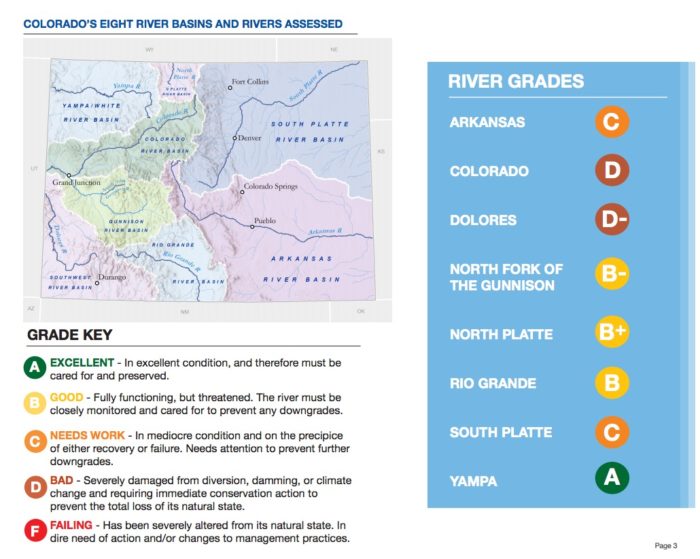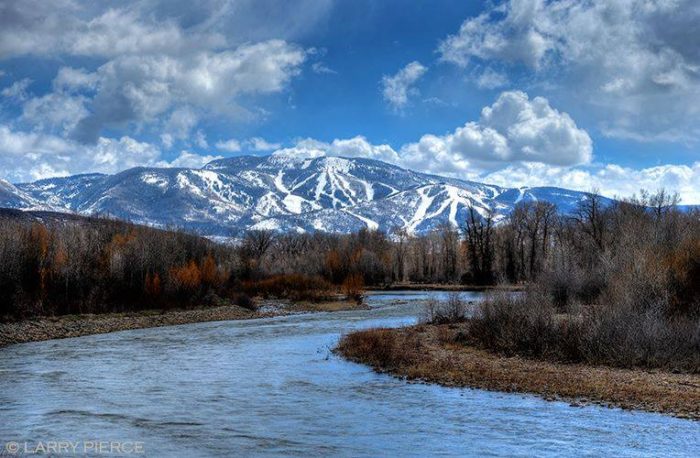
Conservation Colorado just published the first of what it’s calling a “river report card,” where the organization graded eight of the state’s major waterways. The rubric included water flow, water quality, water diverted out of basin, major damns, and other various factors. As you can see above, the results were not pretty.
Only one river, the Yampa, sitting in the the northern part of Colorado and flowing through Steamboat Springs, received an “A.” On this high mark, Colorado Conservation writes,
“The Yampa River is the last major free-flowing tributary to the Colorado River. It’s “A” grade makes it stand out as a singularly unique and healthy river system, but that’s not to say it doesn’t need our attention. Due to the Yampa’s undeveloped and free-flowing nature, it’s more important than ever that we strive to protect and preserve it.”

Other rivers were not so fortunate. The Colorado River received a “D” because of its heavy exploitation, providing water for 35 million people throughout the Southwestern U.S. and Mexico, and the poor water quality, diminished from agricultural runoff, high levels of salts, and other inorganic compounds. Meanwhile, the Arkansas and South Platte are just passing, both with “C” rankings, meaning they need attention to prevent further degradation. And then there is the Dolores, which is part of the Southwestern Basin. It received a “D-“, failing in every aspect with a huge damn, lots of diversion, and polluted water. This river is in dire need of improved management to escape its current nickname- “The River of Sorrows.”
More than anything, Colorado Conservation’s report is a call to action. Even though the other rivers may have a “B” or above, they will deteriorate if we get complacent. Through this study, the organization hopes “to increase awareness and public knowledge and spur action to protect, restore, and conserve Colorado’s most valuable resource: water.”